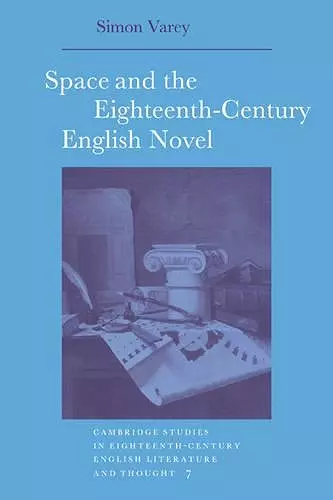Space and the Eighteenth-Century English Novel
Format:Paperback
Publisher:Cambridge University Press
Published:23rd Nov '06
Currently unavailable, and unfortunately no date known when it will be back
This paperback is available in another edition too:
- Hardback£114.00(9780521374835)

This study, first published in 1990, relates the idea of spatial design in the major novels of Defoe, Fielding and Richardson to eighteenth-century architecture.
In this challenging study, first published in 1990, Simon Varey relates the idea of spatial design in the major novels of Defoe, Fielding and Richardson to its use in the theory and practice of eighteenth-century architecture. He draws on a wide range of architectural books, as well as such novels as Robinson Crusoe and Tom Jones.In this challenging and illustrated study, first published in 1990, Simon Varey relates the idea of space in the major novels of Defoe, Fielding and Richardson to its use in the theory and practice of eighteenth-century architecture. Concepts of divine design, expressed in the work of philosophers and theologians, introduced an ideological element to the notion of space which gave it a heightened significance in contemporary thought. Professor Varey's central argument is that space becomes a political instrument used to establish conformity, assert power and give form to the aspirations of social classes. He draws on a wide range of architectural books, both English and European, and on the example of Bath (focusing in particular on its chief architect in the eighteenth century, John Wood). The discussion of novels such as Robinson Crusoe, Tom Jones and Clarissa examines narrative as a form of spatial design, the use of architectural imagery to describe people, and the political control of social space.
"Knowledgeable, specific, and well-designed....the first book to talk not only about the influence of architecture on literature, but to enact that interplay, to make readers enter the edifice of writing." Kevin L. Cope, Philological Quarterly
ISBN: 9780521031790
Dimensions: 228mm x 154mm x 14mm
Weight: 360g
236 pages